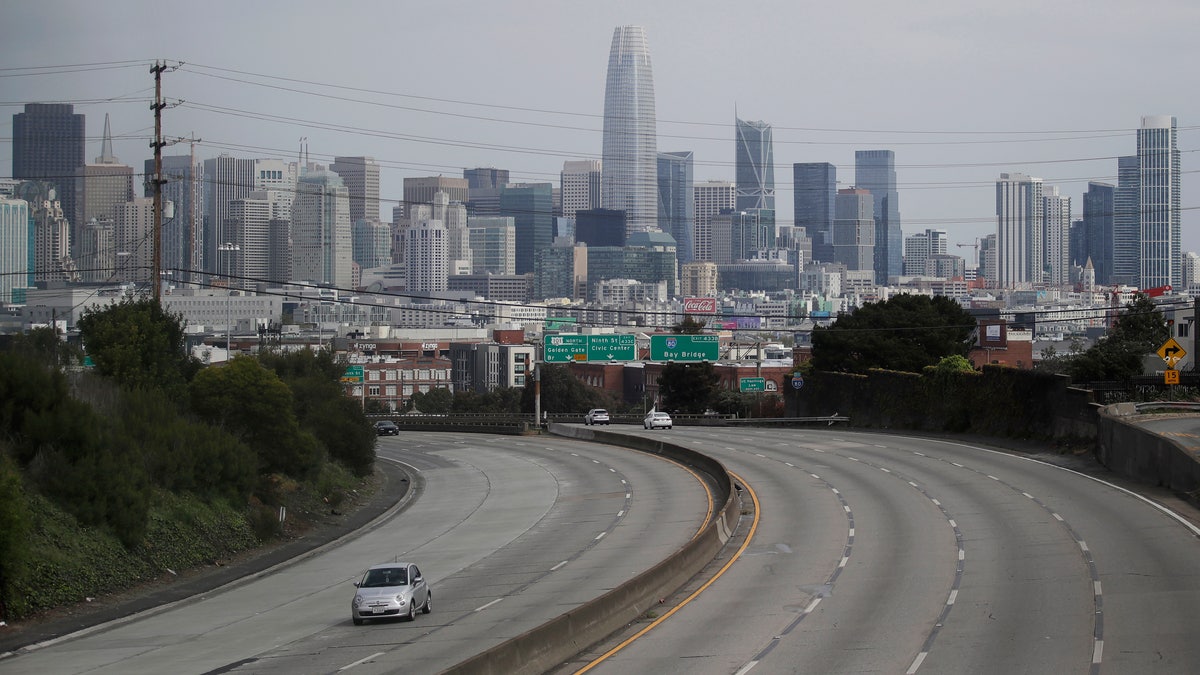Coronavirus leaves California freeways empty, police warn of uptick in drivers speeding over 100 mph
California police are warning drivers to slow down. From Los Angeles to San Fransisco, an increase in speeding has led to more severe crashes on the state's highways.
Get all the latest news on coronavirus and more delivered daily to your inbox. Sign up here.
Car crashes in California were reduced by more than half following the state's “shelter in place” order to limit the coronavirus spread, and the fewer crashes saved taxpayers an estimated $1 billion during the time period, according to a survey last Wednesday.
The UC Davis survey concluded the lack of crashes was a result of "statistically significant" changes in traffic volume.
Traffic volume in certain highways was down by 55 percent when compared to data from last year, resulting in a lack of crashes and a potential savings of $40 million each day to the public.
SAN DIEGO-AREA PROTEST TARGETS CORONAVIRUS CLOSURES OF BEACHES, WALKING TRAILS

Light traffic is seen on Highway 101 in San Francisco, amid coronavirus concerns. (AP Photo/Jeff Chiu, File)
“The savings was about $40 million a day ... That’s about $15 billion over a one-year period, which is almost the size of the state portion of California’s transportation budget for a year,” Fraser Shilling, co-director of the Road Ecology Center at UC Davis, told the Los Angeles Times.
The survey looked at data from California Highway Patrol incident reports and the savings were calculated by using similar data from the Federal Highway Administration, according to the paper. The costs included property damage, treatment of injuries, lost time at work, emergency responses, insurance claims and the equivalent cost of a life, the survey said.
The survey looked at data from when Gov. Gavin Newsom's stay at home order went into effect and compared it to a similar period in 2019. Between March 21 -- two days after the order -- and April 11, the average daily number of all traffic collisions was about 450. Collisions were estimated to be 1,128 during the same time last year.
CALIFORNIA MAYOR WHO COMPARED TRUMP BACKERS TO KKK DIES IN PLANE CRASH: REPORT
Fatal car crashes decreased from 496 to 237 over the same 22 day period, the survey said.
Shilling added that a major benefit of the stay-at-home order was a reduction in fatalities and injuries amid pedestrians and cyclists throughout the state.
”Suddenly you have much fewer cars,” Shilling said, according to the paper. “So it’s much safer to be a pedestrian or cyclist these days.”
CLICK HERE FOR MORE CORONAVIRUS COVERAGE
While crashes have greatly decreased, the survey found drivers on certain California highways were able to travel at higher speeds during times that would have been otherwise congested before the order.


